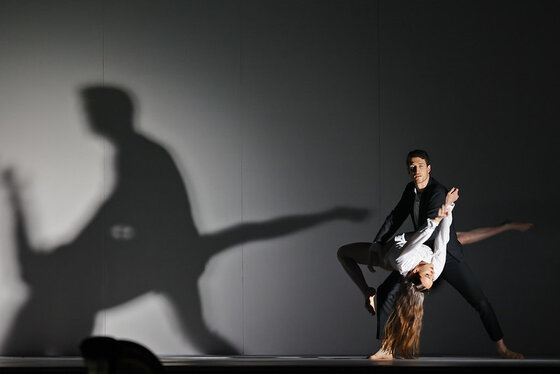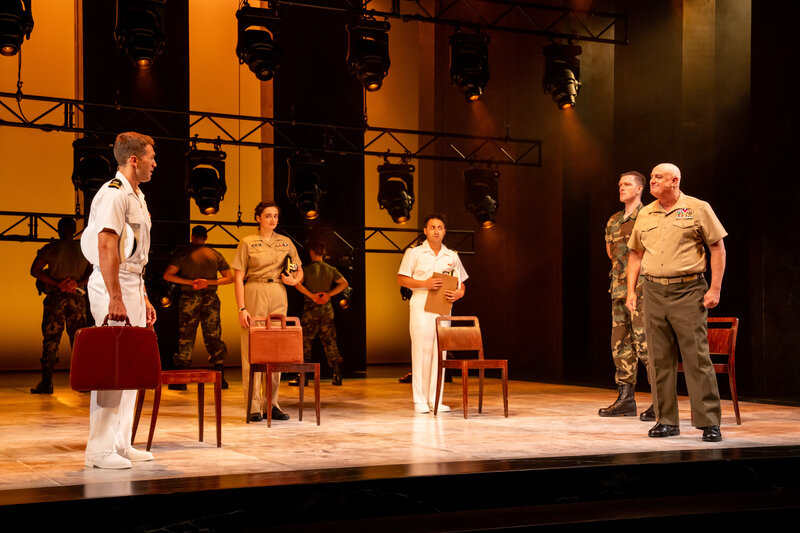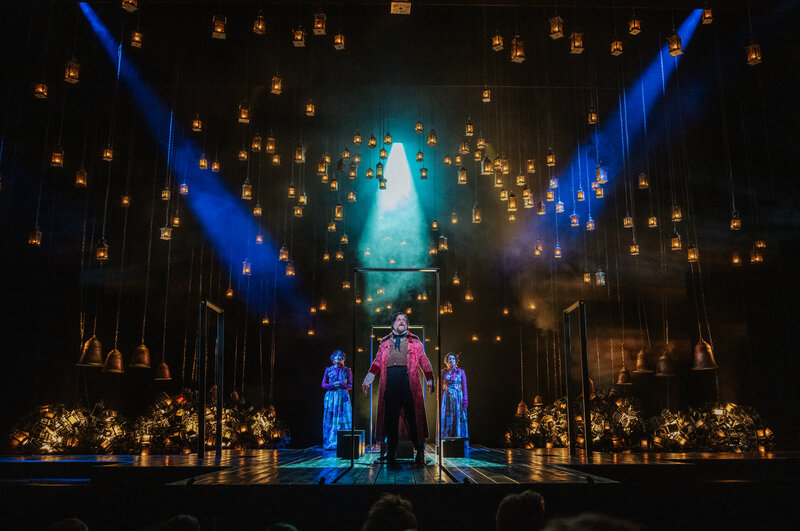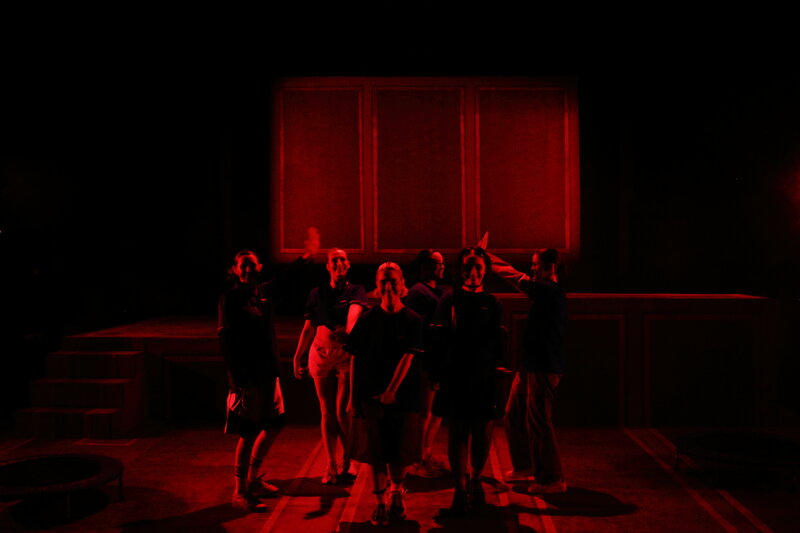“I’m ashamed to say I knew nothing about him. I’d never heard of him,” confesses filmmaker Gillian Armstrong when talking about Orry-Kelly the Oscar winning costume designer who is the subject of her latest documentary film Women He’s Undressed.
Kelly was born in the NSW town of Kiama in 1897, and made his reputation as a costume designer in Hollywood during its Golden Age. He designed costumes for some 300 films, including classics like Casablanca, Some Like It Hot, etc, and he won three Oscars along the way. And in the 20s he roomed with a young actor named Archibald Leach in Greenwich Village. But despite all of this he is not that well known. And Armstrong’s entertaining and informative documentary attempts to redress this.
 The film was actually the brainchild of television and film producer Damien Parer, the son of photographer Damian Parer, Australia’s first Oscar winner who won for his film about the Kokoda Trail in the 1940s. Parer was researching other Australian Oscar winners when he came across Orry-Kelly’s name and was amazed that this Australian had designed iconic films like Some Like It Hot, An American In Paris, Les Girls, Casablanca, The Maltese Falcon, 42nd Street, and yet nobody knew anything about him. He felt that he definitely deserved a film. He spent a couple of years researching and putting together ideas for a film before he approached Armstrong with the outline and asked if she would be interested. Armstrong also looked up Orry-Kelly and was similarly shocked that he had been part of some of the most iconic films from the Golden Age of Hollywood, virtually from the 1930s to the 1960s, and yet so little was known about him. “I felt this was an amazing career and some brilliant work, and this man deserved to be known,” she continues.
The film was actually the brainchild of television and film producer Damien Parer, the son of photographer Damian Parer, Australia’s first Oscar winner who won for his film about the Kokoda Trail in the 1940s. Parer was researching other Australian Oscar winners when he came across Orry-Kelly’s name and was amazed that this Australian had designed iconic films like Some Like It Hot, An American In Paris, Les Girls, Casablanca, The Maltese Falcon, 42nd Street, and yet nobody knew anything about him. He felt that he definitely deserved a film. He spent a couple of years researching and putting together ideas for a film before he approached Armstrong with the outline and asked if she would be interested. Armstrong also looked up Orry-Kelly and was similarly shocked that he had been part of some of the most iconic films from the Golden Age of Hollywood, virtually from the 1930s to the 1960s, and yet so little was known about him. “I felt this was an amazing career and some brilliant work, and this man deserved to be known,” she continues.
Armstrong explains that one of the reasons why Orry-Kelly is not that well known now is that at the end of the 60s the Golden Age of Hollywood was considered old fashioned, and suddenly anything to do with the past seemed clunky. An exciting and brave new wave of cinema and grungy indie American films had come out, films like Easy Rider and Midnight Cowboy, and those old films had become passe. And after Orry’s mother died he didn’t come back to Australia as much. He was also ill for the last couple of years of his life, so he just disappeared from the public consciousness.
The fact that little was known about Orry-Kelly and there was a lack of archival material about the man presented a huge challenge for Armstrong and her creative team. “I don’t think you can do a feature length documentary without finding real depth and layers and stories, and that’s what my writer Katherine Thompson and I went out to find,” she adds. “I didn’t know if I’d got enough story to do an hour film or a 90 minute film. I’m always interested in character. This is a story about design and costume, but it’s also about who that person was, why did he succeed, and what was it like to work in the era, and what was his personal life like? Was he happy? And those are the sorts of questions you need to ask if you were really going to do a serious biography on somebody.”
There followed two years of detective work and intensive research. Orry-Kelly designed costumes for the likes of Marilyn Monroe and Bette Davis, but so few of the great stars he worked with are still alive. Armstrong was fortunate in that she found people like Jane Fonda and Angela Lansbury, who had worked with Orry-Kelly, and that they agreed to be in the documentary and reminisce about their experiences. Veteran costume designer Ann Roth also appears, as do a few personal friends who knew him and who had some fantastic memories.
 There was a wealth of material to draw upon, which meant that the task of editing the film was mammoth, and editor Nicholas Bowman, who has worked with Armstrong on several of her films, spent months cutting the film together, working virtually from dawn to dusk. The process was complicated by having to work through all of the films that Orry-Kelly worked on to try and find scenes to match the information in the documentary. “In an interview one of the subjects might talk about a specific costume or a certain actress so we had to find that scene and fit it. So I got to know the Golden Age of Hollywood very well,” she recalls with a laugh “And also some of these were such wonderful films from incredible directors like Billy Wilder and George Cukor. I felt a real obligation when I found the clips and cut the clips together. We did it with the same sense of style and respectfulness to these wonderful filmmakers.”
There was a wealth of material to draw upon, which meant that the task of editing the film was mammoth, and editor Nicholas Bowman, who has worked with Armstrong on several of her films, spent months cutting the film together, working virtually from dawn to dusk. The process was complicated by having to work through all of the films that Orry-Kelly worked on to try and find scenes to match the information in the documentary. “In an interview one of the subjects might talk about a specific costume or a certain actress so we had to find that scene and fit it. So I got to know the Golden Age of Hollywood very well,” she recalls with a laugh “And also some of these were such wonderful films from incredible directors like Billy Wilder and George Cukor. I felt a real obligation when I found the clips and cut the clips together. We did it with the same sense of style and respectfulness to these wonderful filmmakers.”
Another complication was the lack of footage or interviews with Orry-Kelly. The biggest challenge was how to make the film entertaining, how to take the audience into his thoughts and also get a sense of his personality. One way Armstrong tried to make the information more entertaining was to have actor Darren Gilshenan play Orry-Kelly in linking scenes to give an idea of his self deprecating wit and style. “We found in the letters and interviews has got a sense of this self-deprecating wit. I didn’t want some dry narrator telling you that Orry-Kelly had a dry, self deprecating wit. We wanted the audience to become involved with him as a person. We knew it was risky,” she elaborates, “but we wanted to find a way to do it that wasn’t on the nose. I really hate those terrible re-enactments that some people put in documentaries. We wanted to find a more radical and perhaps more poetic way to tell some of Orry’s stories. We hope that we have accomplished this.”
In some ways, Women He’s Undressed is something of a queer history of Hollywood at a time when the movie industry was very homophobic. One of the more fascinating elements of the film are the revelations about Cary Grant who was roommates with Orry-Kelly in Greenwich Village for nine years in the 20s. “There are so many stories out there about what really went on with Cary and Orry, and that was one of the things we wanted to get to the bottom of, to find the true story of their relationship, which we managed. Especially since we found these people who were still alive who knew them both.”
Armstrong talks at length about the key relationship between a filmmaker and a costume designer. “To me costume is incredibly important, that’s one of the reasons I made this film,” she says. “I think costumes say so much about a character. For me it really is about helping the story. I do a lot of research before I choose my costume designer, and I’ve been incredibly lucky and have worked with some of the world’s best costume designers (such as Colleen Atwood, who has also designed costumes for many of Tim Burton’s films including Edward Scissorhands). It’s very important to me. There are times when there is a lot of fiery discussions, and some give and take. The thing the public doesn’t understand is that we do a lot of testing, and we have a lot of discussion about colours and fabrics and what suits the actor. An audience may not be able to put their finger on it but they can tell when it’s wrong, they can tell when it’s not true. It’s something that you want the actor involved with because it is about finding their character, and when it’s right it helps make your film.”
 Women He’s Undressed was chosen to relaunch the iconic Astor cinema in Melbourne at a lavish party. Armstrong acknowledges that it was a great honour to have this movie selected to be the opening night film for the Astor because it was in many ways such a perfect fit. The Astor opened in 1935 and would have been showing Orry-Kelly films, his name would have been up on that screen over and over through its greatest age. And then in the last thirty years when it has become a retrospective theater showing classic films his name would have been up there in the credits of films like Casablanca or Some Like It Hot, opening those classic films up to a whole new audience.
Women He’s Undressed was chosen to relaunch the iconic Astor cinema in Melbourne at a lavish party. Armstrong acknowledges that it was a great honour to have this movie selected to be the opening night film for the Astor because it was in many ways such a perfect fit. The Astor opened in 1935 and would have been showing Orry-Kelly films, his name would have been up on that screen over and over through its greatest age. And then in the last thirty years when it has become a retrospective theater showing classic films his name would have been up there in the credits of films like Casablanca or Some Like It Hot, opening those classic films up to a whole new audience.
“When the Orry-Kelly one came along I thought that I could have fun and that I could have complete freedom,” Armstrong concludes. “As a documentary we wanted to make sure it was true and accurate, but from a creative side we wanted to be able to find a really imaginative way to tell the story. We had fun making it. And there is heart in that film as well. It does say a lot about growing up a gay person in a small country town in Australia. I had a personal connection because a very close friend, a gay friend of mine, drank as much as Orry, and so I have dedicated it to a dear friend who’s no longer with us.”
Greg King

David Edwards is the former editor of The Blurb and a contributor on film and television




